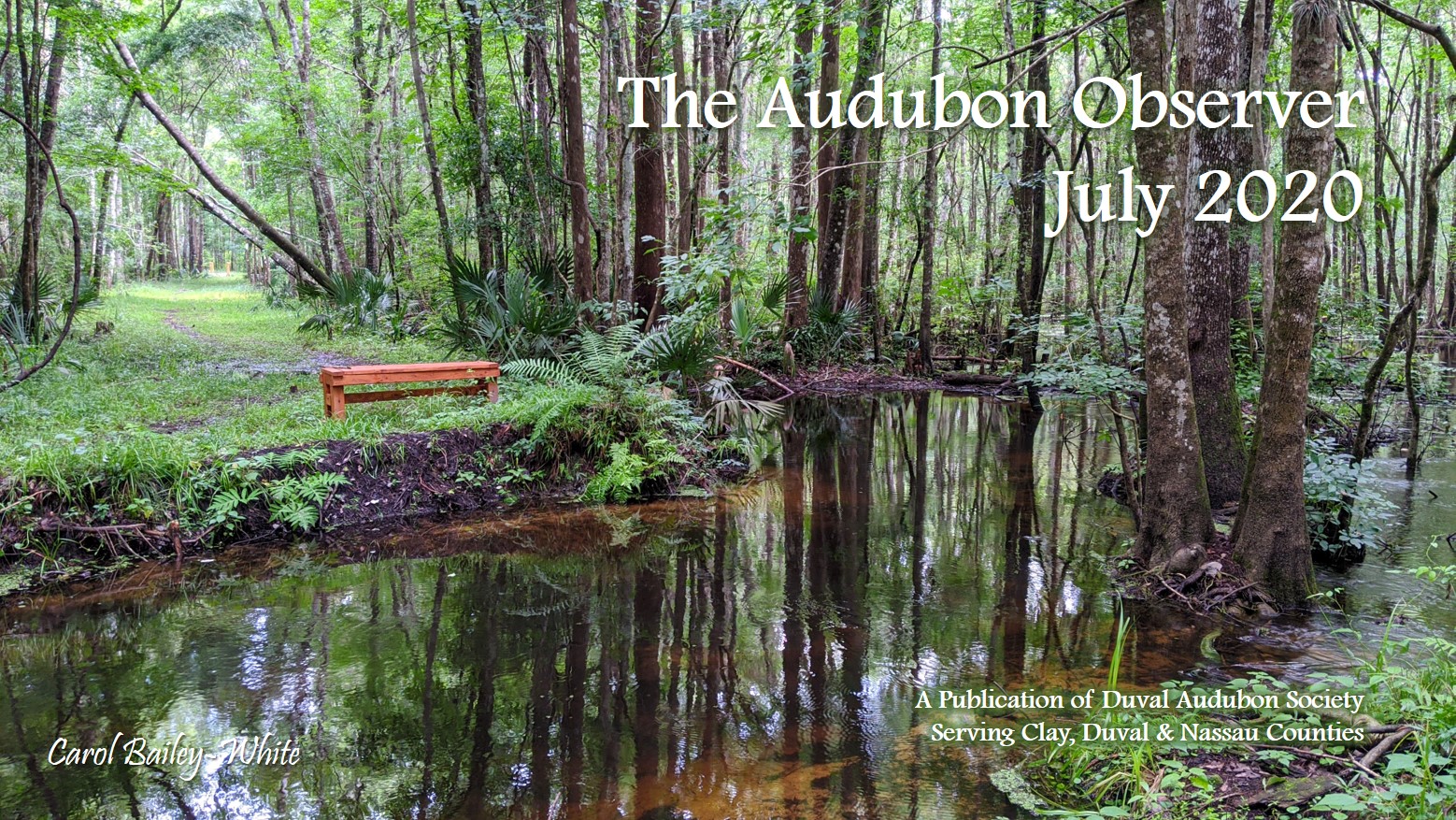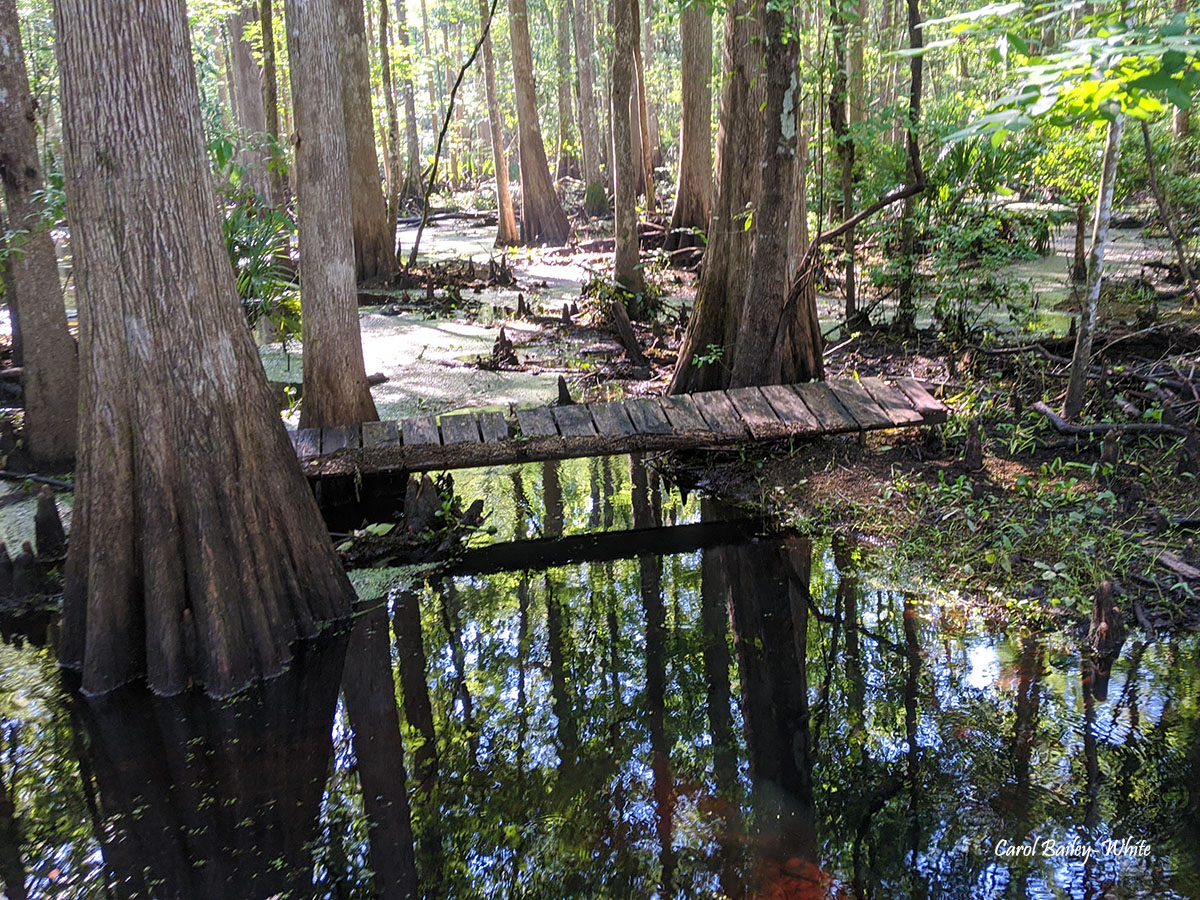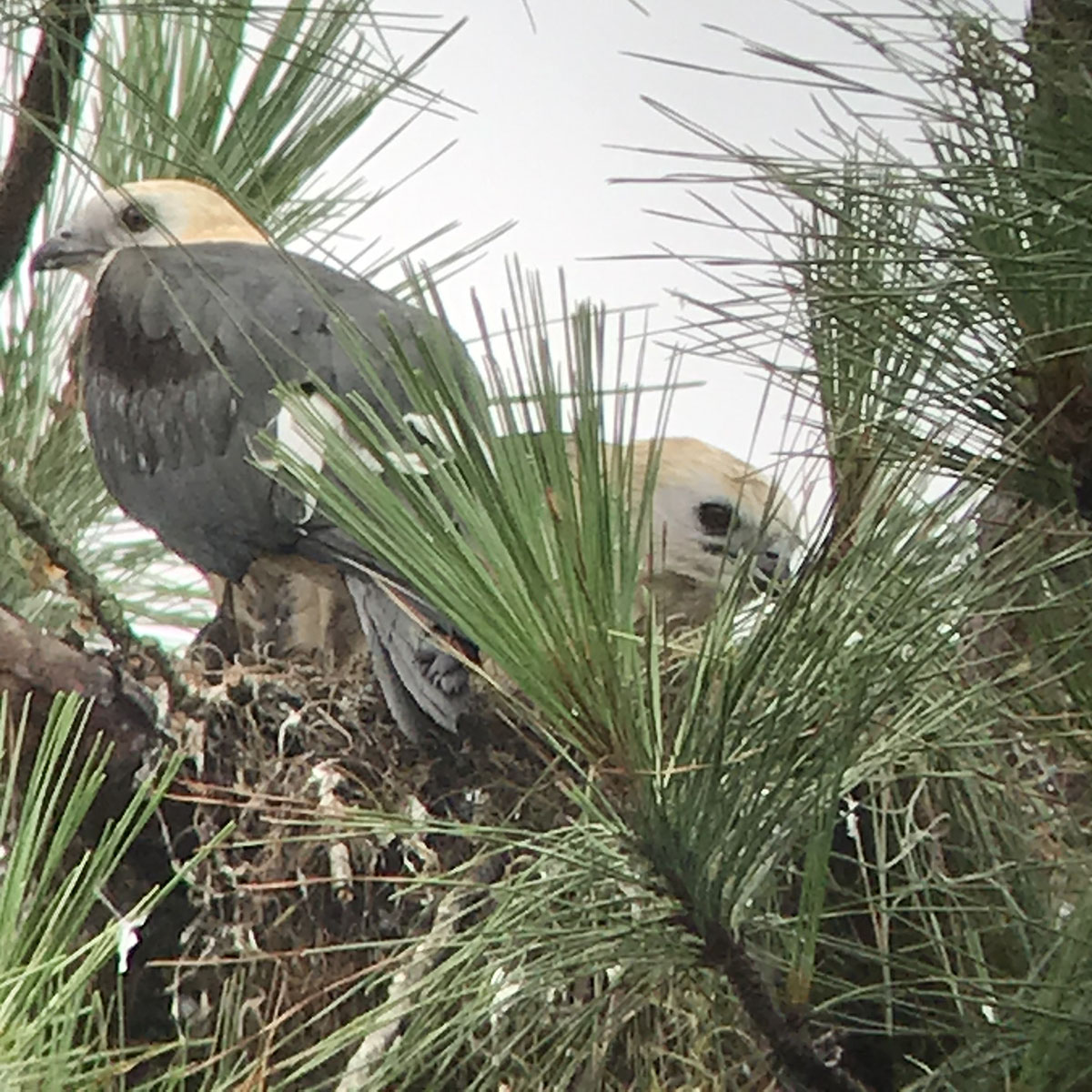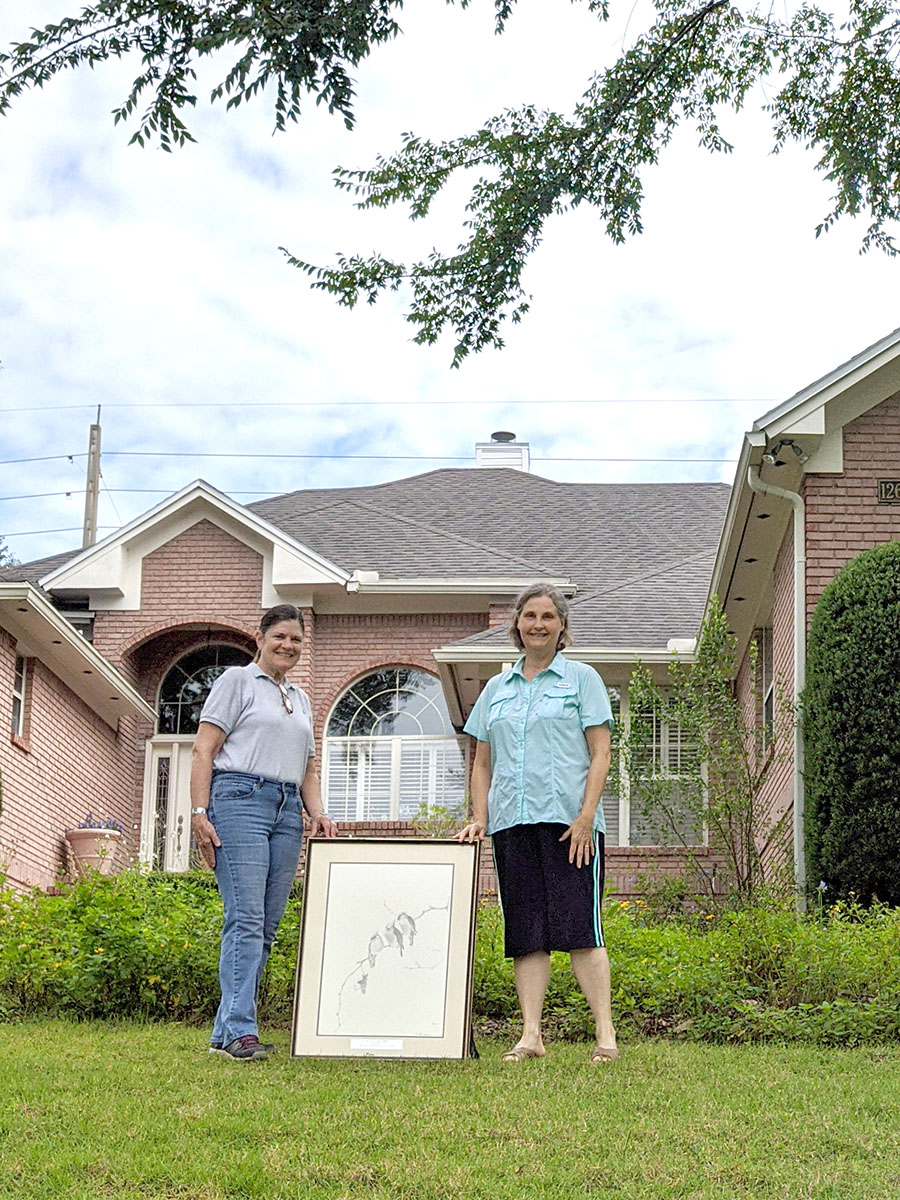The Audubon Observer, July 2020
|
|
||||
CROSBY SANCTUARY UPDATE
But Hurricane Irma was an extremely unusual storm. According to a News4Jax story published a year after the storm hit, "Irma’s position and the flow of the St. Johns River combined to create a menace to the area." The hurricane moved northward along the Florida peninsula, with strong winds and heavy rains dumping huge amounts of water into the northward-flowing St. Johns, creating a powerful storm surge. When the incoming high tide, also extra-high due to the storm surge, met the storm surge moving northward in the river, the water had nowhere else to go, and surrounding areas experienced significant flooding, the worst these areas had experienced in over 100 years. No amount of human-engineered mitigation in the Crosby conservation property swamp could have prevented the flooding from Hurricane Irma.
Wetlands like the Crosby swamp function as natural sponges that trap and slowly release surface water, rain, groundwater and flood waters. Trees, root mats and other wetland vegetation also slow the speed of flood waters and distribute them more slowly over the floodplain. This combined water storage and braking action lowers flood heights and reduces erosion. (Source: https://www.epa.gov/wetlands/why-are-wetlands-important) Crosby Sanctuary is home to many different species of birds, animals, insects, and plants, and also provides valuable ecosystem services such as flood water attenuation, stormwater treatment, temperature regulation, and nutrient cycling. We are grateful to be able to preserve and protect this important natural area, and plan to do so for many years to come. --Carol Bailey-White, President FLORIDA-FRIENDLY LANDSCAPING™
Now, if you haven’t already discovered it, we’d like to introduce the Institute of Food and Agricultural Sciences at the University of Florida, commonly called IFAS (pronounced "i-fuss"). They have local offices in Duval, Clay and Nassau counties and are willing to help. Their Florida-Friendly Landscaping™ Program offers nine principles for making your yard environmentally sound yet also beautiful. These principles include water and fertilizer conservation techniques, how to protect wildlife, how to manage pests, and how to protect your waterfront. Many homeowners feel restricted by their HOA regulations, but in 2009 Florida homeowners gained the legal right to have a Florida-friendly yard (see Florida Statute FS 720.3075 (4)(a)). The statute FS 373.185 (1)(b) defines “Florida-friendly landscaping.” This does not mean that homeowners can let their yards go wild, or that they can do anything they want. Homeowners still need to submit their plans to their HOAs as per their agreements; however, the HOA cannot require things like only St. Augustine grass and non-native bushes and trees. Homeowners in HOAs should also encourage their organizations to adopt Florida-friendly landscaping specifications. Click HERE for tips on your legal rights as a Florida homeowner and how to more effectively communicate with your HOA when implementing your Florida-friendly yard. Be informed, grow a terrific yard with low maintenance for yourself and wonderful benefits for the birds. --Carolyn Antman, Conservation Director, Duval County SWALLOW-TAILED KITES FLEDGE!
Soon the entire group will leave the area to join a large pre-migration roost (location unknown) before leaving in August on their epic migration to South America. For more information about Swallow-tailed Kites, check out Audubon's Swallow-tailed Kite page, and visit the Swallow-tailed Kite Migration Blog of ARCI (the Avian Research and Conservation Institute). --Carol Bailey-White, President CHAPTER PRESIDENT INSTALLATION
The framed artwork by noted Jacksonville artist Lee Adams is a limited-edition, signed print of an exquisite drawing of Cedar Waxwings, and was awarded to Duval Audubon Society in 1976 by the City of Jacksonville as the Mimi and Lee Adams Environmental Award. According to the City's website, "Mimi Adams served as the first chairman of the Jacksonville’s Air Pollution Board formed in 1968, and also in many other civic organizations. Lee Adams was an internationally known artist and naturalist, who became known as the South’s successor to John James Audubon for his paintings of flowers, birds, and fruits. In 1972, the City established the annual Mimi and Lee Adams Environmental Awards to recognize those who have worked to enhance and preserve the environment." This spectacular artwork has been passed down to each incoming chapter president since then, a wonderful tradition that keeps our chapter's history alive. Many thanks to Jody Willis for her exemplary leadership over the last three years - her initiative, drive, and dedication to our chapter have been an inspiration to those following in her footsteps. And we're thrilled that Jody will continue to be involved with our chapter as vice president and community outreach director. Thank you, Jody! --Carol Bailey-White, President Duval Audubon Society, Inc. |
||||

 In early June, heavy rains swept through the northeast Florida area. Orange Park was especially hard hit, causing significant flooding at our
In early June, heavy rains swept through the northeast Florida area. Orange Park was especially hard hit, causing significant flooding at our  Volunteer Emil Kotik visited Crosby on June 8th and while hiking the swamp trail discovered flood waters nearly to his waist in some spots. But soon the high water had receded, as the Crosby wetlands were able to absorb the extra water and allow it to flow into the Ortega River (and ultimately into the St. Johns), establishing the normal water levels in the swamp within a couple of weeks.
Volunteer Emil Kotik visited Crosby on June 8th and while hiking the swamp trail discovered flood waters nearly to his waist in some spots. But soon the high water had receded, as the Crosby wetlands were able to absorb the extra water and allow it to flow into the Ortega River (and ultimately into the St. Johns), establishing the normal water levels in the swamp within a couple of weeks. This year we have featured a different Florida native plant in our monthly newsletters, hoping to help you landscape your yard in a more bird-friendly (and environmentally friendly) way. We have recommended wonderful resources like Audubon's
This year we have featured a different Florida native plant in our monthly newsletters, hoping to help you landscape your yard in a more bird-friendly (and environmentally friendly) way. We have recommended wonderful resources like Audubon's 
 Last month
Last month July marks the beginning of our new year, and although the worldwide health crisis has currently put the brakes on our normal activities, we hope to be able to resume a limited schedule of activities in September after our summer hiatus. But the work of managing our chapter goes on, and outgoing chapter president Jody Willis (on the left) recently bequeathed the traditional president's keepsake to incoming president Carol Bailey-White.
July marks the beginning of our new year, and although the worldwide health crisis has currently put the brakes on our normal activities, we hope to be able to resume a limited schedule of activities in September after our summer hiatus. But the work of managing our chapter goes on, and outgoing chapter president Jody Willis (on the left) recently bequeathed the traditional president's keepsake to incoming president Carol Bailey-White.